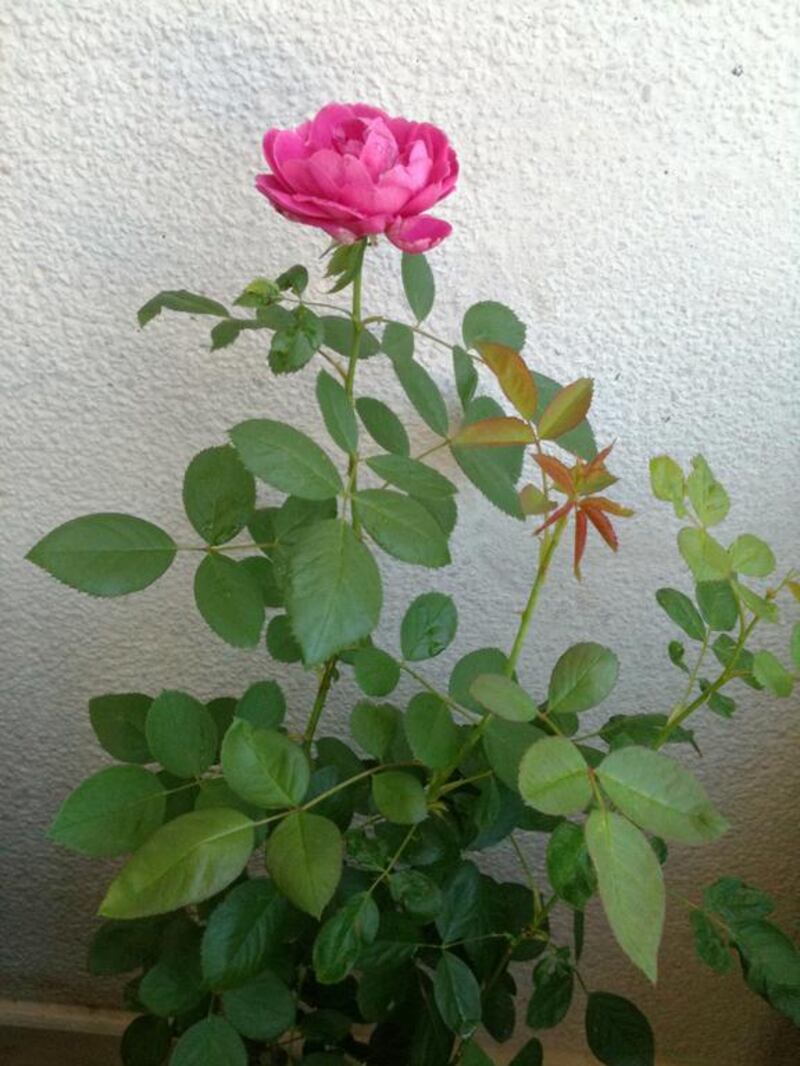Scent in the garden can be highly evocative. Take my night-blooming jasmine. Come close to it on a silky December evening in Dubai and inhale the heady perfume as the secretive jasmine opens in the dark and exudes its fragrance late into the night. It reminds me of Karachi and summer evenings in the local park where I often headed for a reprieve from the sweltering heat. Night jasmine grew abundantly along the walls of this small, courtyard-like park. My grandma firmly believed that it acted as a magnet for snakes. I doubt that many snakes braved the urban madness of Karachi. But under grandma's watchful eye, we kept our distance.
Fragrant flowers, however, were all my grandma really cared to grow. Life in her rooftop apartment was lived on the terrace. There were roses planted in recycled cooking-oil cans, and motia, a more-common day variety of jasmine, grown in terracotta pots. There were other plants such as aloe vera, from which my aunt extracted juice for conditioning her long hair. But scent was prized above every other attribute in a plant.
The roses were my aunt’s pride. In the morning, she emptied tea leaves, scooped from the bottom of the kettle after being brewed for the morning chai, into the base of the rose plants. If you got up with her, around daybreak, you could catch a glimpse of dazzling green parrots hopping around on the roof parapets, on their way to and from the mango tree that grew outside the house.
On my terrace, I’ve recently introduced raat ki rani, or night queen as it is popularly known in the subcontinent. Admittedly, the plant isn’t much to look at, but tucked away in a corner, it has formed a joyous scented backdrop to my musings under the night sky. The motia is a prettier-looking jasmine, with its glossy leaves and thick, round blooms.
As for roses, my gardening friend Virginia Roberts has recently been mastering the art of growing them as she prunes and pampers the rose bushes, miniatures and climbers, 20 in all, that she inherited from the previous tenants of her villa in Garhoud.
“Pruning is a must to encourage healthy and shapely growth of the plant,” says Roberts, who takes to her roses with a pair of sharp secateurs every March and August, at the beginning and end of the growing season.
In her experience, rose plants in this part of the world thrive best in semi-shade. Roberts advises mixing one teaspoon of baking powder into a quart of 50:50 water and fat-free milk, as a natural fungicide in case of black spot on the rose leaves.
“Spray every five to seven days and remove all infected plant tissue,” she advises. For a nutritional boost to her rose plants, she prefers manure over synthetic fertilisers.
Another local rose enthusiast, Emma Gibson Arkle, incorporates the age-old coffee trick to increase growth and blooms. She scoops out the coffee grounds from her used Nespresso capsules, much like my aunt with her tea leaves, and adds them to the soil. Both tea and coffee make the soil slightly acidic – exactly how rose plants like it. They also provide nitrogen for good leafy growth.
Remembering the past through scent in the garden is an emotional, at times painful, experience. My grandma has been gone seven years. So are the rose plants and jasmine. Even the mango tree became a victim of the municipality’s occasional road-paving outbursts. But remembering, I believe, can also be healing.
Shumaila Ahmed is a Dubai-based gardener, teacher, researcher and writer.
weekend@thenational.ae
Follow us @LifeNationalUAE
Follow us on Facebook for discussions, entertainment, reviews, wellness and news.





